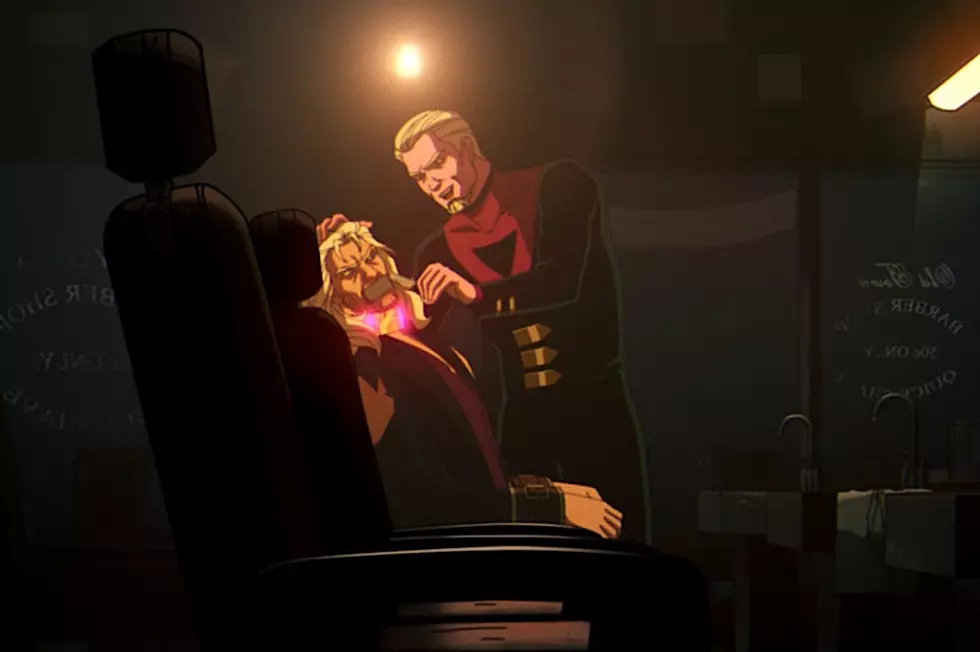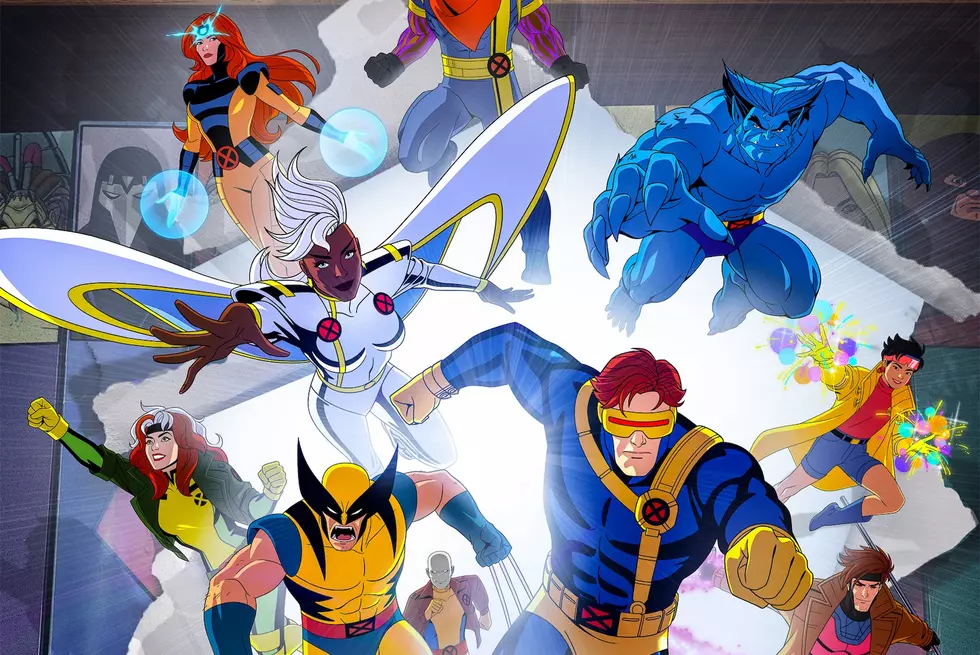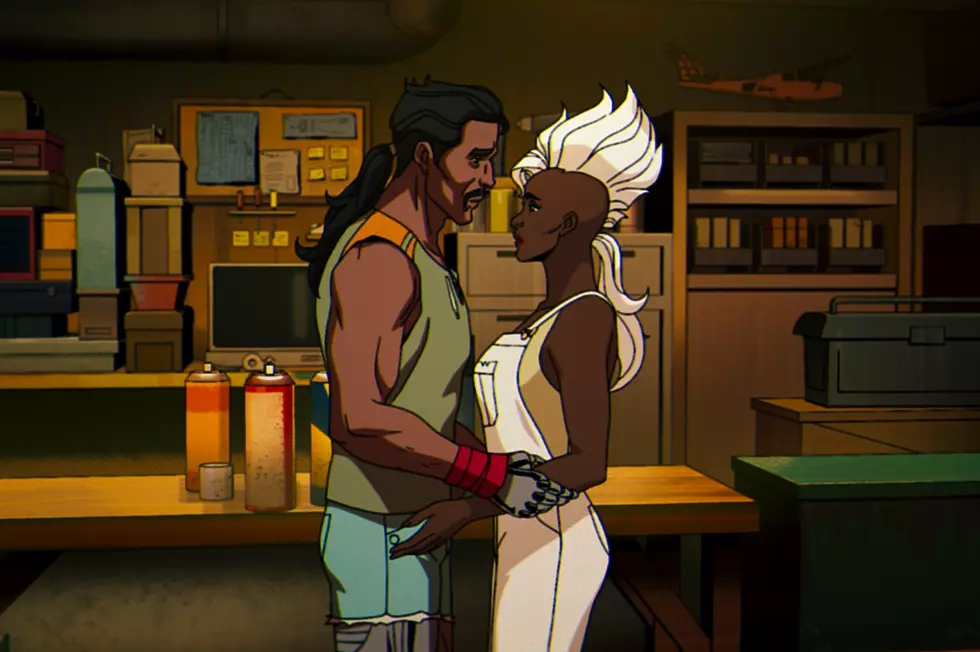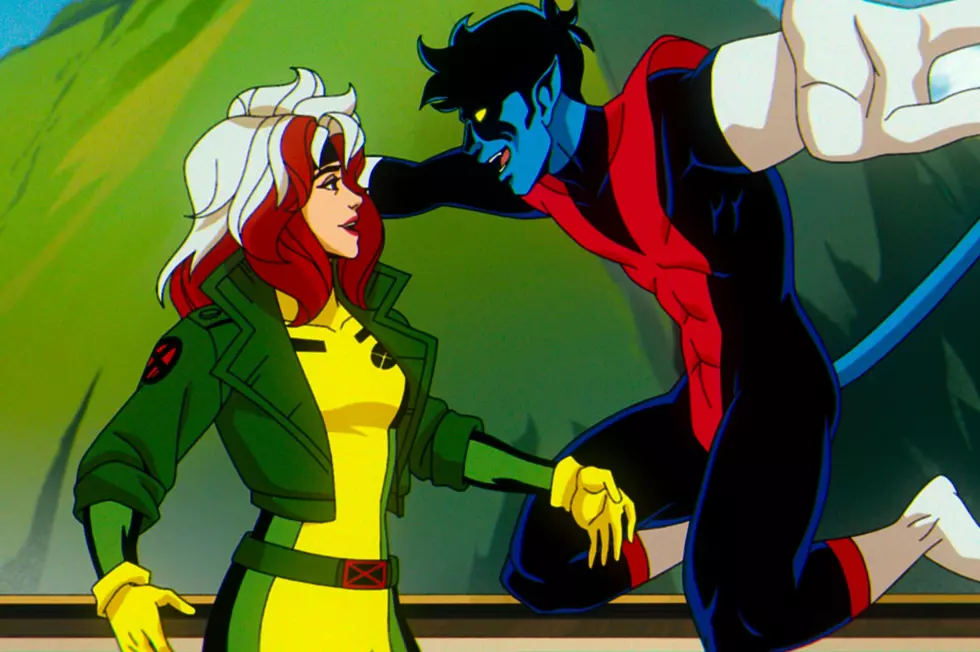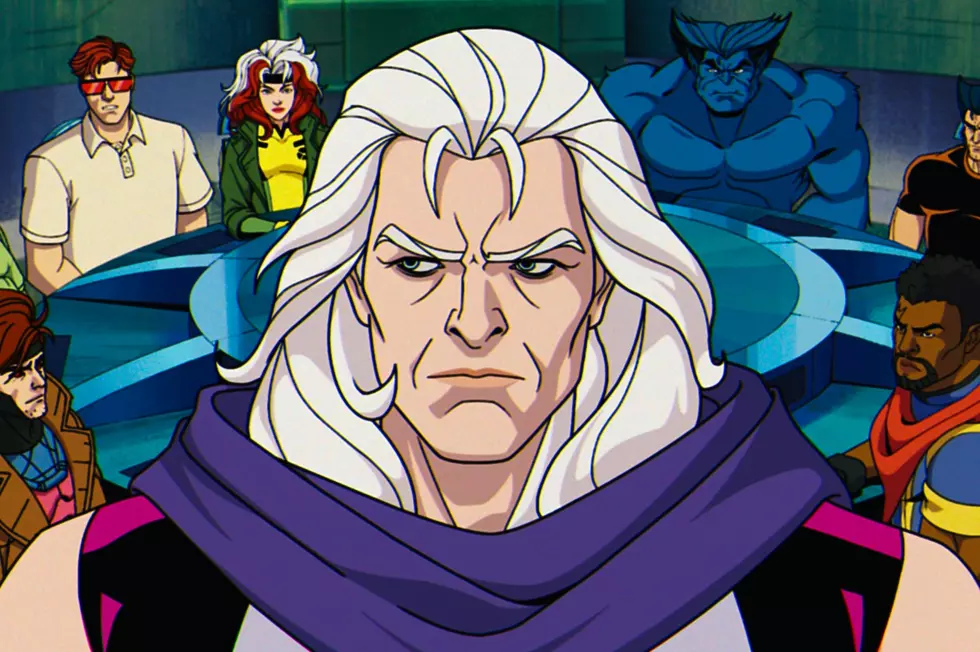
A Movie Storyboard Artist Reveals the Secrets of His Trade
The director always gets the credit for a film’s visuals. In rare cases, a really distinctive cinematographer might get some kudos too. But the reality is those two filmmakers sit at the head of large teams of artists and craftspeople who help shape the look of your favorite movies.
One of the most important — but least heralded members — of that team is the storyboard artist, who helps turn the director’s and writer’s ideas into reality by putting them on paper early in the pre-production process. If you’ve seen movies like Logan, Inception, and X2, for example, you’ve enjoyed the efforts of Gabriel Hardman, who worked as a storyboard artist on all those films.
Hardman has been a storyboard artist in Hollywood since the late 1990s; in between gigs, he stays busy writing and illustrating comics. (If you’re a fan of Planet of the Apes, I strongly recommend the Apes books he created with writer Corinna Bechko, starting with the terrific Betrayal of the Planet of the Apes.) He recently shared with ScreenCrush ten storyboards from ten of his most well-known projects, and offered us a peek behind-the-scenes of their productions and the craft of storyboarding.
1. Austin Powers: The Spy Who Shagged Me (1999)
On your IMDb page, Austin Powers is the first movie you're listed as a storyboard artist for (although I think this storyboard is actually from the second film). How did you get into the world of storyboarding for movies?
You're correct that this is from the second film. The boards for the first Austin Powers are all pre-digital so they're just stacks of paper in a box somewhere in my closet.
I got into storyboards after a short career in comics starting when I was 18. The comic industry collapsed in the mid-’90s and through some planning and luck I managed to transition into storyboarding commercials and then, soon after, my first feature. The reason I was able to make it work was a self-taught education in filmmaking that let me speak the language with directors even though I had little practical experience. More than anything I'm a huge film fan. I don't know if any book has connected with me more than Hitchcock/Truffaut. The lessons Hitchcock imparts in there are the basis for my ideas about filmmaking and visual storytelling.
2. The X-Files (1998)
This storyboard has a camera move (Camera slides) and then details at the bottom (“Low Angle,” etc). Is that taken from the script? Or instructions from the director? Or is that purely your interpretation of what you were given and how you think the scene should be shot?
In this instance, the shot and the camera direction would have come from director Rob Bowman. The X-Files was another early storyboarding project for me and it was a crucial one. Bowman was primarily a television director before that and he taught me an enormous amount of practical lessons about filmmaking, staging, and visual storytelling philosophy. I learned more from directors like Rob than any of the A-List directors I worked with later on. I should really look him up and thank him for that. More and more over the years, I’m not given shot for shot instructions from the director. I'm expected to take a pass on a sequence on my own, sometimes from a script or sometimes from a loose concept. Then the director will give notes on that.
Can you give me an example of something you learned from Rob?
A lot of his advice was about how to frame shots in dynamic ways that will cut well. Putting something in the foreground of a shot is always better. Subtle ways to orient the camera to give the audience a near subliminal sense of peril and danger just through the shot composition. I also got the chance to direct a couple second-unit shots on that movie which was a hugely instructive experience.
3. X2: X-Men United (2003)
When a movie like this brings you on, are you hired to storyboard the whole movie? Only certain action sequences? And then how long does it take to storyboard a film? Are there multiple passes, just like there are multiple drafts of a script?
Most often there are multiple storyboard artists on a big film, each of us shepherding different sequences and reporting to the director. On the three Christopher Nolan films I worked on, I was the only storyboard artist. Despite their size, those were all very lean operations. I'd say the average length of time I've worked on a film is four months, though on occasion it's been nearly a year and in one traumatic instance nearly two years. It all depends on what the production and the director needs. I've often stayed on through principal photography, particularly if the script is in flux during shooting. There are almost always many drafts of a sequence as the script, production elements, and ideas all change during the process.
4. Superman Returns (2006)
Can you sense from the script or talking from the director whether a movie will be good or bad? How are your instincts in that regard? On your IMDb page, for example, it lists Wild Wild West among your credits. You don’t have to talk about that movie specifically. But I wonder if you can tell at this early stage of a film whether something is going to be a huge hit or may struggle.
As you well know, a lot of bad movies are hits. But for the most part it’s clear what direction a film is going creatively while we’re working on it. The fact that more often than not when I start on a movie the script either isn’t finished (or, in the case of Superman Returns, doesn’t exist at all) makes it very difficult to gauge. There are other movies that aren’t to my taste no matter what so I have to just assume it’s for somebody if not me. Wild Wild West was one of my early jobs and everyone working on it was coming off the huge success on Men in Black. It never seemed like a movie I’d like personally, but you never know if the charisma of the stars or some indefinable element could make an otherwise weak script work in the end. In the case of WWW, it clearly didn’t. X-Men 2 was the opposite. There was never a finished script and it easily could have been a mess, but by and large it worked out.
When you worked on Superman Returns, there wasn’t even a script? What are you working from for that sequence? A verbal description? A treatment?
I had a meeting with Bryan Singer where he gave his broad pitch for the film then I was basically given "Superman saves a plane carrying a space shuttle and it has to end in a baseball stadium." That's it. Bryan went off to Hawaii with the writers to work on the script and I designed that sequence with previs animators from Pixel Liberation Front. We were making a Superman sequence for the movie we hoped this would be. I presented the fully animated previs sequence with music and everything to Bryan when he came back to Los Angeles, he approved it and that's what's in the movie. Except for some of the action inside the plane you can run our previs sequence next to the final film and it matches shot for shot.
5. Spider-Man 3 (2007)
What's the coolest sequence from a movie you storyboarded that was then cut from the movie and didn’t make it into the final cut?
Prior to Superman Returns I worked for Bryan Singer on a remake of Logan’s Run that never happened. I, along with a team of previs animators from Pixel Liberation Front, designed a great French Connection-ish elevator and foot chase through a futuristic city. In this case the whole movie went down and I worked with the same team to design the sequence in Superman Returns.
No matter how VFX heavy or fantastical the film I’m working on, I always approach it like it would be shot by a real cameraman on the streets of 1970’s New York. I always start with the ground level POV. I never want a sequence to become inert spectacle. It has to start with the characters.
6. Tropic Thunder (2008)
Do you approach storyboarding a comedy differently than storyboarding a drama?
Definitely. Comedy works in different ways than drama. In comedy, it's often good to telegraph a gag to the audience because their anticipation of the joke can make for a better laugh. Comedy also works better in wider shots with fewer cuts. You need to see what's happening very clearly.
Do you ever let budget (i.e. how much something might cost to actually achieve what you're drawing) factor into your considerations of what you draw?
There are definitely practical concerns involved in designing sequences and I'm frequently in contact with different departments on the film to make sure it's possible to do what I'm boarding. Though as green-screen-driven digital filmmaking (which I'm not a fan of) has taken over this has become less of a concern.
7. Inception
The spinning top is one of the most famous props in movie history. And people debate the ending, whether the top continues to spin or is about to stop. In your work with Nolan (or in drawing your storyboards) did he tell you (or do you have an opinion) how that ending should be interpreted?
If he did, I wouldn’t say.
8. The Dark Knight Rises (2012)
Some of these storyboards are very detailed, others are very loose. Some have ink and some are just pencil. What determines that?
It depends on what the director wants. Nolan wanted the boards drawn loosely in pencil, not digitally, on paper. You’d have to ask him why. Storyboards have to be drawn quickly no matter what. The purpose of them is to communicate how the movie will be shot to different departments on the production, not to make pretty pictures for public consumption. But some directors like Jim Mangold on Logan valued the more finished, atmospheric keyframes and boards I do because they helped establish the visual tone of the movie for everybody.
9. Edge of Tomorrow (2014)
You're a great comic book writer and artist as well. How has storyboarding and working with filmmakers impacted how you approach your work as a comic book writer and artist?
Comics and movies share a lot when it comes to visual storytelling, but there are probably more differences than similarities. They’re really totally different forms. But there’s no question that all the time I’ve spent thinking about film storytelling influences my comic book work. I’m not trying to make “cinematic” comics, though. If a comic doesn’t work on its own formal terms, it’s not going to connect with the reader. The fact that both comics and storyboards are drawn makes them seem more similar than they really are. Boards are like a visual screenplay – instructions for the crew of the film. Comics are the final product. They’re all about communicating the nuance of action and emotion to the audience. In that way, comics are much more satisfying to work on.
10. Logan (2017)
What’s your proudest work as a storyboard artist? And does it matter to you whether what you illustrate winds up reflected onscreen? Or if the scene works and it looks nothing like what you drew, is that okay too?
Inception and Logan are the films I’ve worked on that I’m happiest with. But it’s very difficult for me to look at movies I’ve worked on with any perspective. I can’t see them through the eyes of a regular audience member. It’s not important to me if my work ends up onscreen. I’ve long ago lost the ability to be precious about a drawing or an entire sequence since it can all be thrown out at a moment's notice. It’s all part of the process and storyboards are all about process.
Do you have any desire to direct yourself?
Absolutely. I've spent a lot of time developing projects that ultimately didn't come together. It can be very frustrating to spend months chasing financing just to have it all fall apart. This was a big reason I went back to writing and drawing comics. I can tell an entire story by sitting down at my drawing board and I don't need permission or millions of dollars to do it. But I'm still deeply passionate about filmmaking and I'm making a serious run at getting a film that I'd direct going now as well as looking for directing assignments.
Gallery: The Best Movie Posters of 2016
More From ScreenCrush
